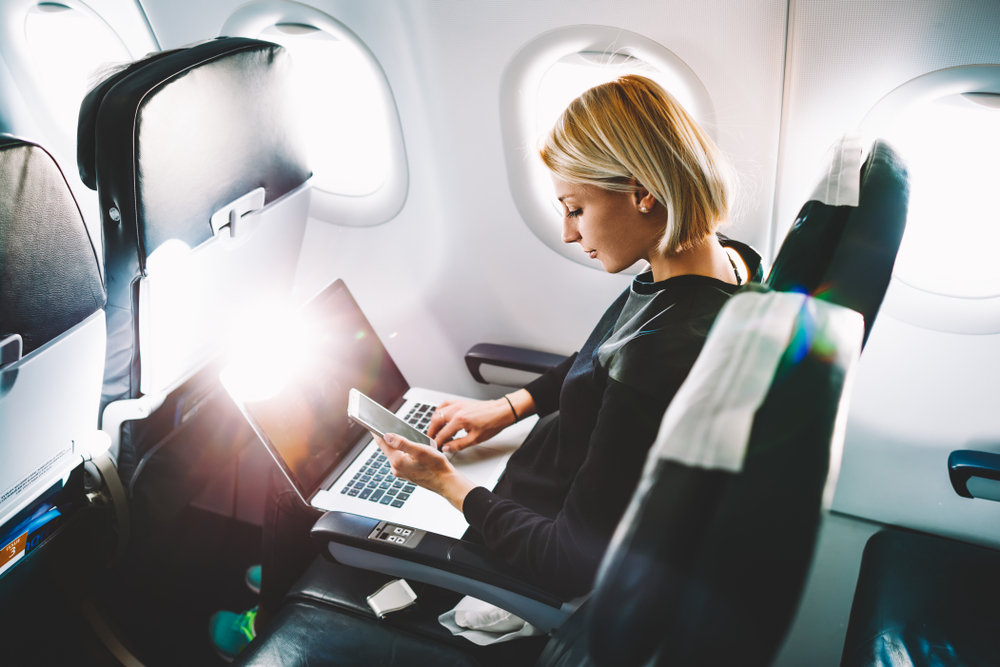Boon or bane: What does the longest, non-stop flight mean on business travel?
Contributors are not employed, compensated or governed by TDM, opinions and statements are from the contributor directly
 Aussie airline Qantas made history after it completed the first non-stop commercial airline flight from New York to Sydney. The flight took 19 hours and 16 minutes!
Aussie airline Qantas made history after it completed the first non-stop commercial airline flight from New York to Sydney. The flight took 19 hours and 16 minutes!
49 passengers and crew tested the flight assessing the health and well-being of travellers while being on board. Data from these experiments will be used to help shape the crew rostering and customer service of Qantas’ ultra-long-haul flights in the future – including Project Sunrise.
Qantas curated its services to help reduce jetlag, such as cabin lighting and in-flight meals. Alan Joyce, Qantas Group CEO, said: “We know ultra-long-haul flights pose some extra challenges but that’s been true every time technology has allowed us to fly further. The research we’re doing should give us better strategies for improving comfort and wellbeing along the way.”

What is the effect of this longest, direct flight to business travellers? TD speaks with Sylvia Brune, co-founder of AHOY, a flight booking app for business travellers, and gave her two cents on the impact of this new trend on business travel.
What does this latest industry news mean for global business travel trends?
SB: “Making non-stop, long-haul flights a viable commercial option could have a huge impact on the efficiency of global business travellers. When they can remain on board and uninterrupted until they reach their destination, there will be less stress and less time wasted on international layovers, waiting in transit, collecting bags and going through security.
“Not only could this mean more value for money for businesses, but employees will also be able to work more productively while travelling and have some extra hours of sleep. This means they will arrive at their destination feeling prepared, refreshed, and ready to perform at their best – if there is Wi-Fi available on board, even better.
“Qantas’ flight shows great potential for growth across other key international airports and routes, and provided the needs of business travellers are kept in mind, international travellers and the industry will undoubtedly benefit.”
Are long haul flights a good or bad thing for global businesses and corporate travellers?
SB: “Long haul flights have the potential to improve business travel, by offering flyers a better workplace environment and more time for uninterrupted work. Time previously spent waiting in international airports can instead be used for working, thinking, and resting.
“To make this work, however, long-haul flights need to be planned with business travellers in mind. Frequent flyers will know that while on the go, the plane or vehicle is their workplace – so it needs to house all the necessary amenities that support productive work. Access to charging stations, Wi-Fi, and ergonomic seats are a must, as well as space to move about. Sitting for longer than six hours straight is a health risk, not conducive to either the individual or the business.
“If airlines start to understand the benefits of these onboard improvements, long-haul flights will benefit global business, and airlines will be able to take advantage of a new business traveller market.”

How can business travellers prepare themselves for long-distance travel and what can HR departments do to support them?
SB: “Preparation is key for any business traveller looking to maximise their productivity. Taking steps to avoid jet lag is a great way to arrive at your destination ready to tackle work. Staying hydrated throughout the flight, following the time zone of your destination whilst on board, and having the necessary supplies to eliminate physical and mental stress is also a must for frequent business travellers.
“HR departments can support by imagining what the world as a workplace should be like. They can help by creating ‘travel packs’ for their employees containing items such as noise cancellers, compression socks, super battery packs, and even elastic bands for exercising. Communication between HR and travellers is key to ensuring things run smoothly. Not only does this show a willingness to invest in employee wellbeing, but it’s also likely to support the business’ bottom line as travellers will arrive at their destination with the energy needed to solve complex challenges or close deals.
“It’s also vital that HR departments understand the demands of long-distance compared to short-haul flights. Travelling for extended periods can be exhausting, raise employee stress levels, and even lead to burnout. HR departments need to recognise the additional strain on travelling employees. Early and late flights or business travel over a weekend needs to be balanced by periods of rest before returning to the office. It’s time to take a more holistic approach to business travel policy.
“Travelling for business is not the same as travelling for a holiday. Anyone putting in the maximum hours and effort for their company needs two things: The tools to make the most of their time on the go, and time to recharge and reconnect with their families and friends when home.”


Comments are closed.